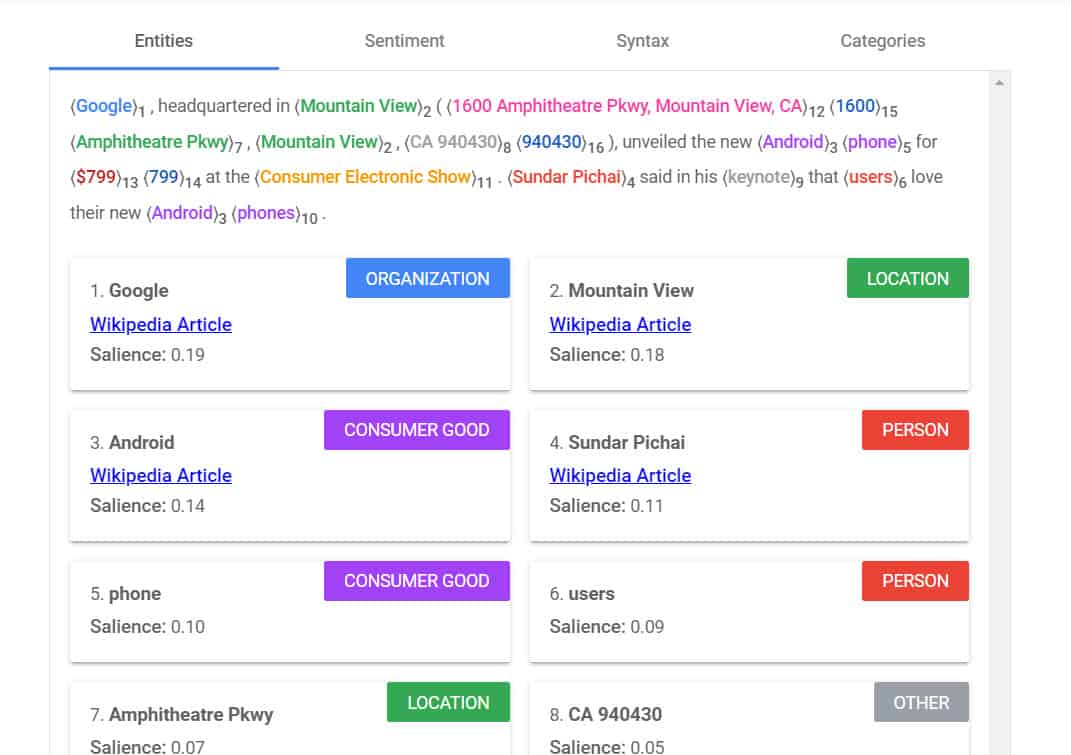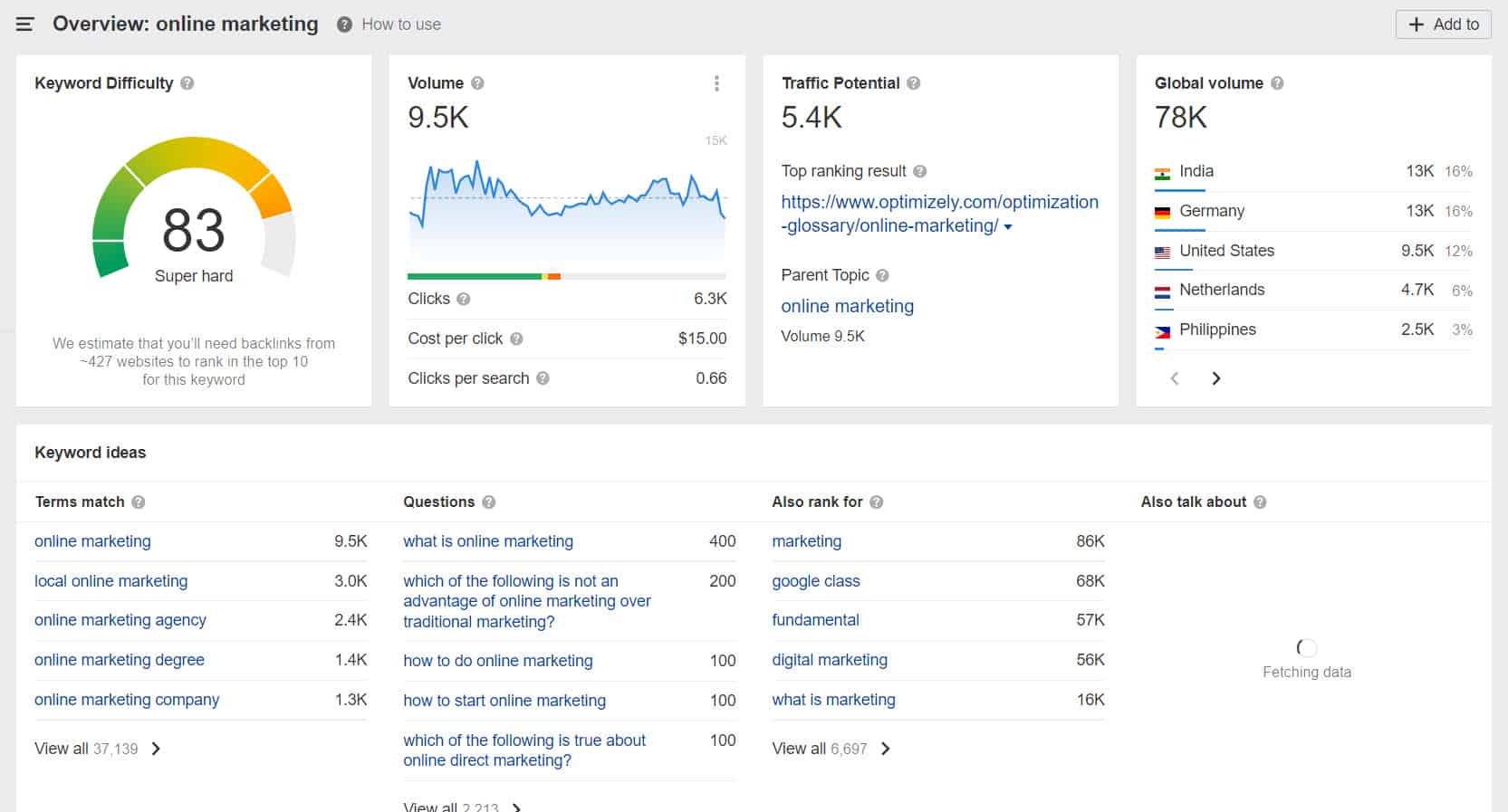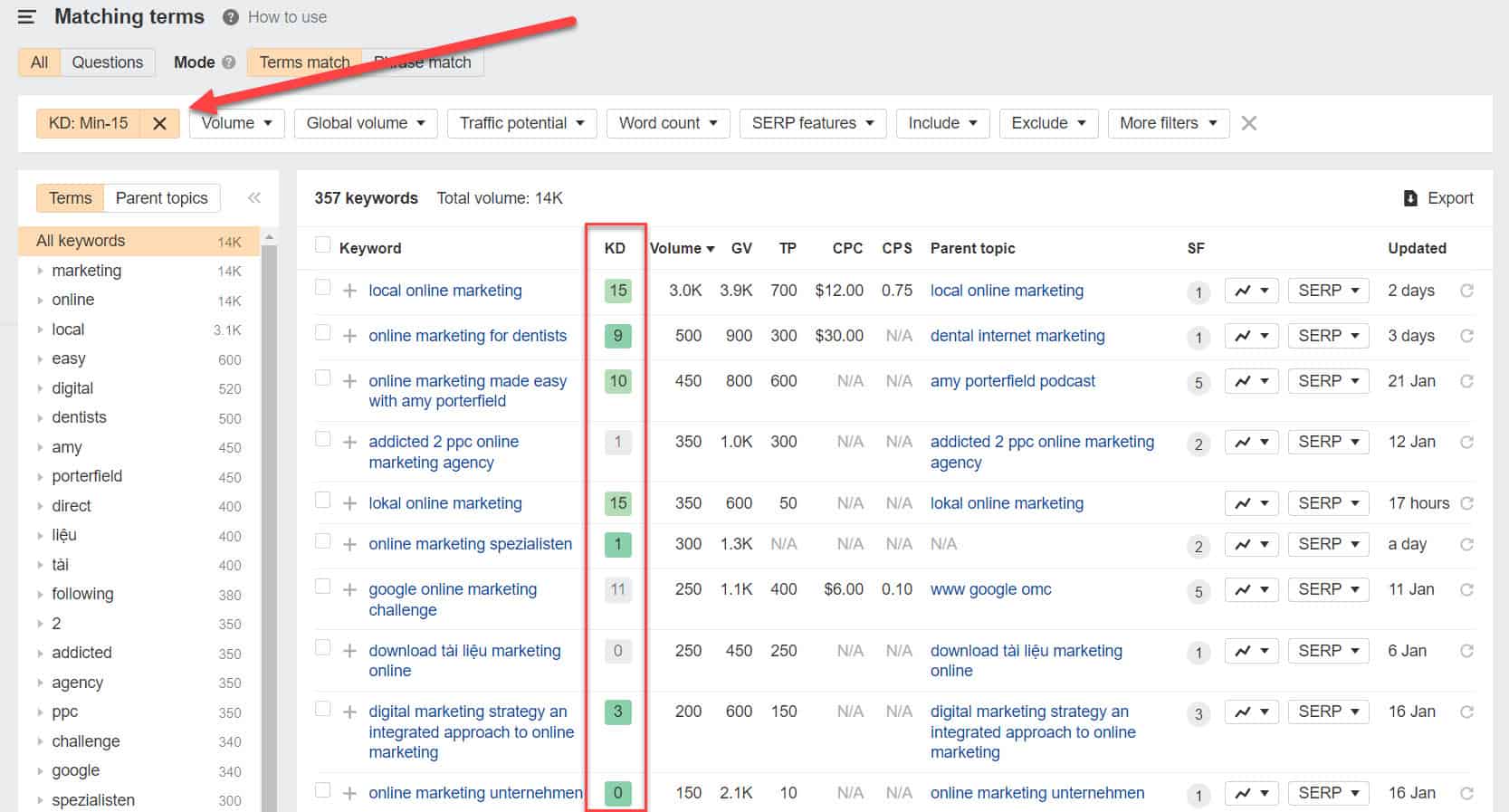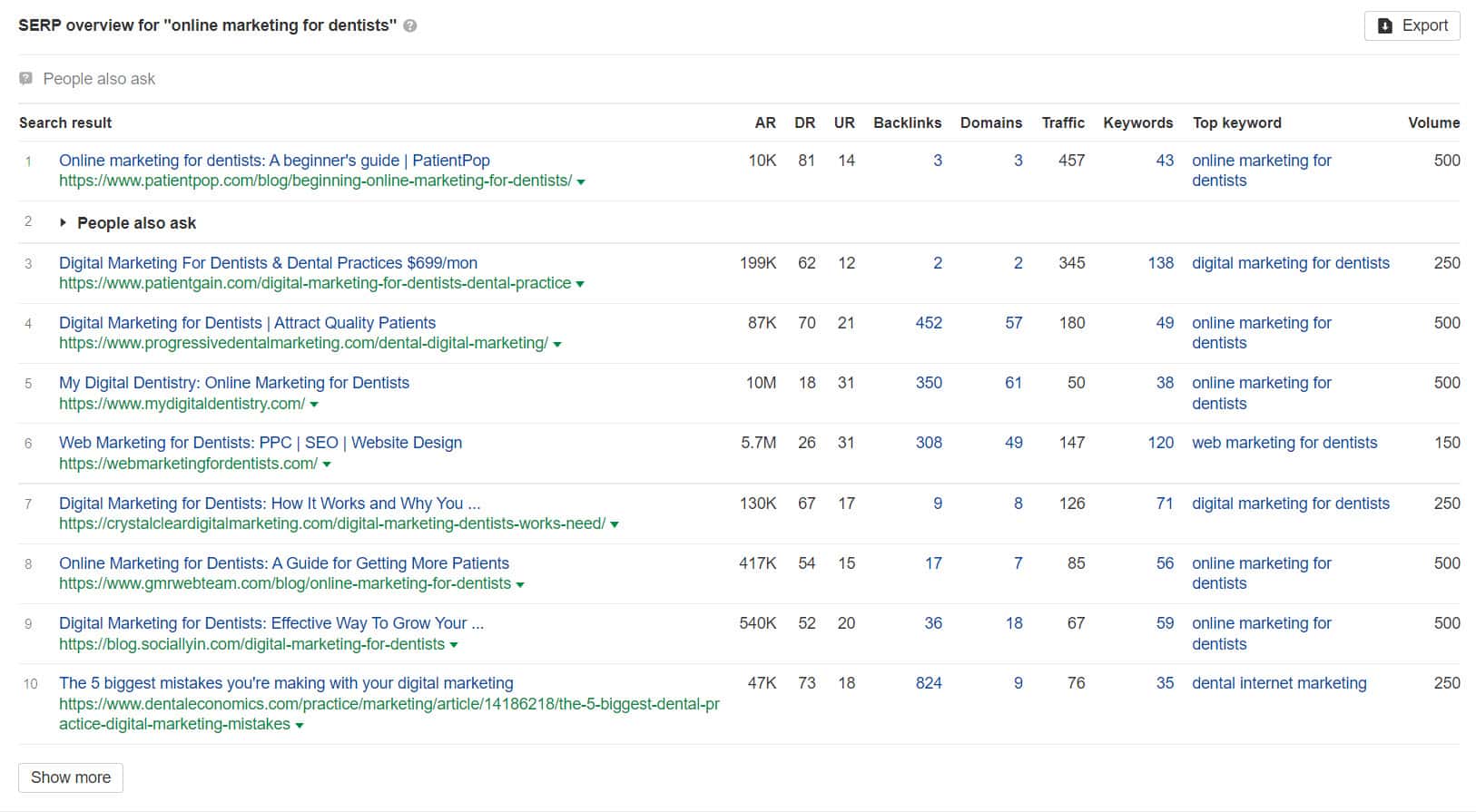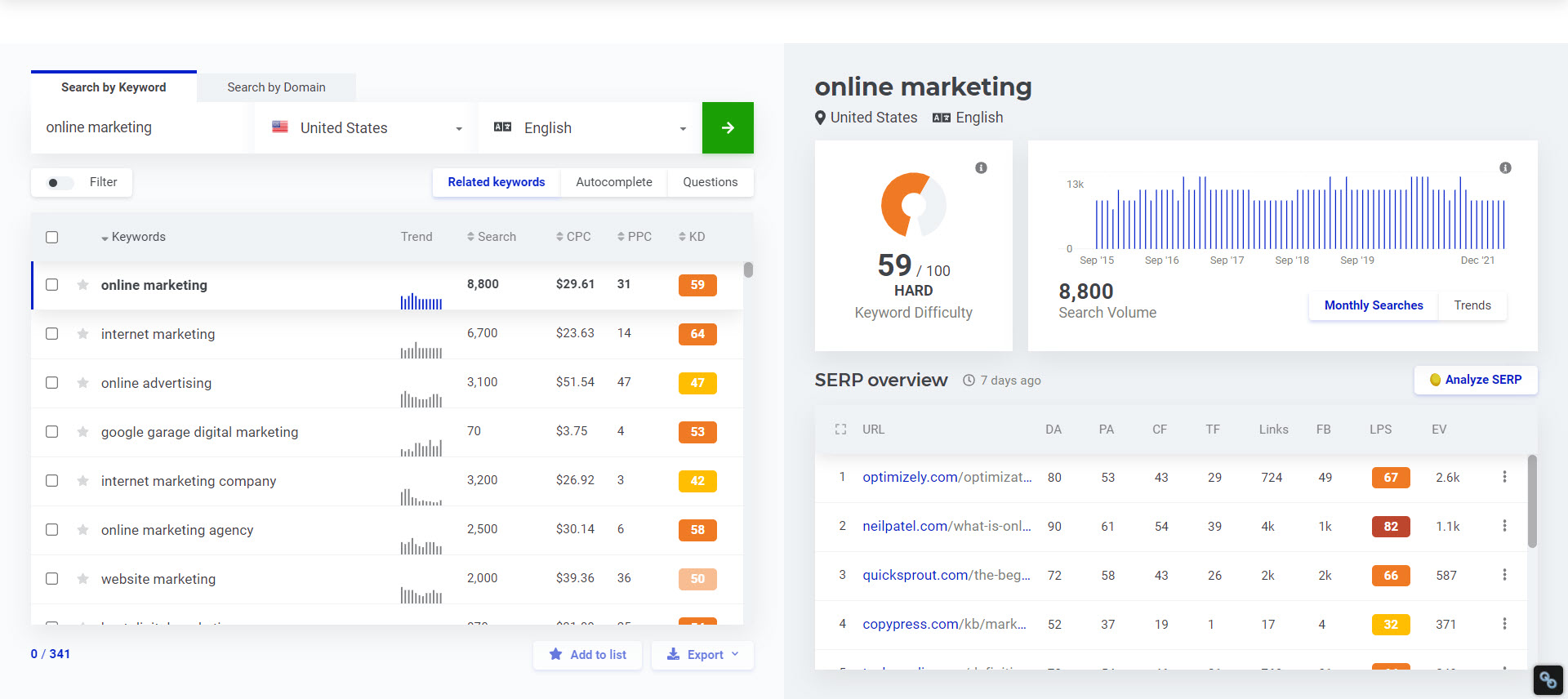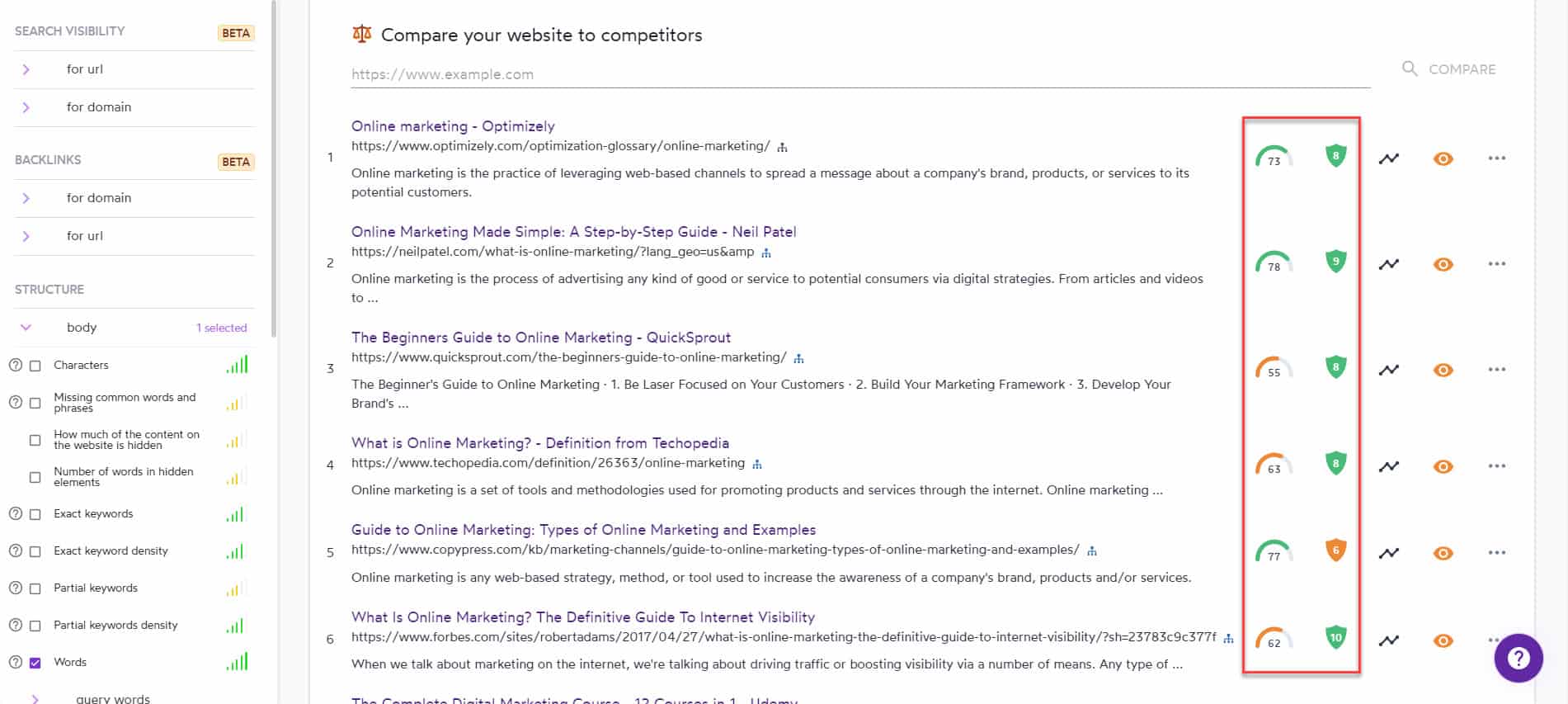Keyword research is a fundamental part of optimizing your search engine optimization (SEO) strategy.
The goal is to identify low-competition keywords that can help you rank higher in search results faster, ultimately driving more organic traffic to your site.
But how do you find such keywords?
Several factors influence the process of finding the right keywords, but one of the most commonly used metrics is the Keyword Difficulty score. This score helps determine which search queries are worth targeting in your campaign.
To learn how this metric works and how to use it to uncover low-competition keywords, keep reading!
First, What Does Keyword Difficulty Mean?
Keyword Difficulty (KD) in SEO refers to the level of challenge or difficulty associated with ranking for a specific keyword in search engine results pages (SERPs). It quantifies how hard it is to achieve a high ranking for a particular keyword, taking into account various factors that influence a page’s ranking potential.
What Is Keyword Difficulty Score?
The Keyword Difficulty (KD) score lets you know how easy or hard ranking for a search query is.
Its purpose is to help make finding easy-to-rank-for keywords more efficient.
Instead of relying solely on a keyword’s search volume, Keyword Difficulty provides users with additional context about the keyword. It allows them to evaluate queries based on how likely you can rank for them on search engine results pages (SERPs).
How Is Keyword Difficulty Calculated?
You can see the KD score of each search query using a keyword research tool. But it’s safe to say that how they compute the score differs for all these tools.
So, you can’t expect to see identical scores for the exact keywords across all tools.
Nonetheless, what you can at least expect is for each tool to produce scores in the same ballpark figure for the exact keyword.
It’s because the tools use more or less the same ranking factors to calculate the keyword difficulty score.
Content Quality
How the content is written matters in determining the Keyword Difficulty score.
The more valuable the content is to users and search engines, the better its quality is.
If all pages ranking for a keyword have quality content, you’re better off finding another keyword to try and optimize for!
But how does one measure content’s usefulness? It seems like quality in this context lends itself to subjectivity, making things even trickier.
For example, a piece of content can be helpful to most but not to others. Does that mean it shouldn’t rank at all because it doesn’t satisfy everyone’s criteria for useful content?
In this case, search engines use machine learning to understand the relationships of words in an article. It ultimately allows them to establish an objective foundation for judging content quality properly.
Here, they expect query-relevant words and phrases to appear on the content to rank it for its target keyword.
First, the content must align with the intent behind a search query.
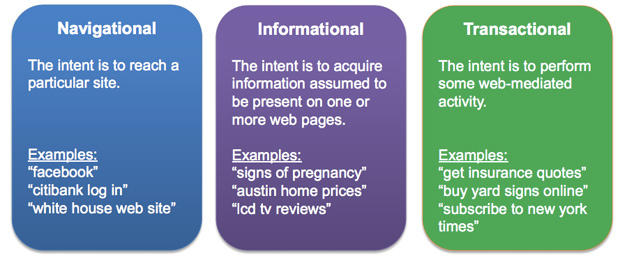
If a particular keyword is asking a question, the page’s ranking must provide an answer. For a query asking for a best-of list, search results should provide listicles of the most recommended items for readers to purchase.
To determine which page search engines should rank on top, it refers to natural language processing (NLP) to determine which words or topics must be included on the page.
Using Google NLP, the search engine can categorize words and phrases (entities) and their importance (salience) for a topic.
The goal is to rank pages for a topic that mentions entities with high salience in their content.
Using the entities, search engines can determine which pages optimized for a keyword are discussing the topic in depth.
Backlinks
There are two layers to backlinks regarding the KD score. The first is quantity.
The more referring domains to a website, the higher the site can rank on Google search.
Think of backlinks as a form of recommendation. More websites linking to a page naturally means that they trust the content found here.
And as more sites feel the same way and link to the page, Google will see its backlinks as proof that the site is viewed as an authority by other people. This results in higher search rankings and more organic traffic!
Quick note: Google only counts the number of referring domains to a website. Even if a site has many backlinks on a high-quality website, Google only looks at one (1) backlink from that domain.
This means building lots of links from the same sites won’t help a site rank higher than it already is. The site needs to find new domains to get links from to move up the rankings.
Here comes the second and the most critical layer: quality.
A single link from a popular site like Business Insider or TechCrunch is much more powerful than all links from unknown and mediocre sites combined.
It’s because these popular sites have higher authority compared to the rest. The links one can acquire from these sites can positively affect the website’s rankings.
The quantity and quality of a site’s link profile dictate its domain authority.
To help you determine a site’s domain authority, Ahrefs shows you each site’s Domain Rating (DR).
Ahrefs measures DR based on a website’s link profile. A website’s DR is high if it has many backlinks from high-quality websites.
Going back to the KD score, the domains ranking on SERPs for low difficulty keywords will normally have low DR.
On-Page SEO
Content quality is a crucial branch of on-page SEO on its own. But that doesn’t make other on-page factors less important.
These help search spiders crawl and index the pages to their appropriate keywords, resulting in higher search ranking and more organic traffic.
From a user’s perspective, you make your site much easier to navigate and understand.
In fact, sites ranking at the top of Google search results have a well-refined on-page SEO strategy in place.
Here are some more important on-page SEO factors that may contribute to the KD score:
- Exact match keyword use -Mentioning the keyword on the content’s URL, H1 title, and SEO title makes it easier for search spiders to know which search term to index the page.
- Site speed – Since page experience is now a ranking factor, it’s in one’s best interest to make their website load fast and efficiently by achieving a high Google Core Web Vitals score.
- Mobile-friendliness – How your website appears on mobile devices dictates its usability. A poor mobile version of your site could result in a slow loading speed and a low retention rate.
- Site architecture – A website must use internal links to create content clusters about relevant topics in a site’s niche. This helps visitors find the information they’re looking for without getting lost and allows search spiders to find the pages they need to index on organic search.
Using the factors above, you can develop an idea of how to compute the Keyword Difficulty metric.
Below is how the keyword research tool Long Tail Pro calculates the keyword difficulty scores:

The tool probably changed its formula over time. But the point is you can use the factors above to determine the keyword competitiveness. This way, you can see for yourself if a search query is worth optimizing for or not.
What Is a Good Keyword Difficulty Score?
For most tools, KD is measured on a scale of 0-100, 0 being the easiest.
Keyword research tool KWFinder categorizes the Keyword Difficulty scores into six groups:

- Easy (0-14)
- Still easy (15-29)
- Possible (30-49)
- Hard (50-69)
- Very hard (70-84)
- Don’t do it (85-100)
A keyword with a low KD score means pages ranking for it on organic search results have poor content and low authority due to insufficient backlink profile.
A quick analysis of the ranking pages would give you more concrete reasons for the low KD score.
You then need to capitalize on this information and create content that fills the gap for this search term. This allows you to leapfrog your competitors and rank atop search results.
Now comes the most important question:
Should I base my keyword research only on the keyword’s ranking difficulty?
Short answer: No.
The Keyword Difficulty score is one of many factors you must use to help you identify which SEO keywords to target for your campaign.
But it’s not by any means an absolute figure you must follow blindly.
For example, you’d think that high-volume keywords with a low KD score are better than long-tail keywords, which historically have low search volume and difficulty.
But looking at the Keyword Golden Ratio, you can’t rank your website for a high-volume keyword if it doesn’t have the authority on organic search, at least for now. This is despite the keyword’s low difficulty.
This example goes to show that you need to approach keyword research holistically. It would help if you considered the keyword’s search intent, search volume, and even your site’s authority to find the best keywords to target for your campaign.
Tools to Calculate Keyword Difficulty
Given the various factors you must consider to measure keyword difficulty, you’re better off using tools that provide you with accurate KD scores for your target keywords.
To successfully choose the right keywords, there are different tools to choose from in the market. But the ones below feature reliable keyword difficulty data that makes the keyword research process a breeze.
Ahrefs
Aside from being a backlink checker, Ahrefs is a full-suite SEO tool that lets you conduct keyword research using its gamut of features.
Its Keyword Explorer provides users with a Keyword Difficulty score that’s trusted and well-respected in the industry.
The great thing about Ahrefs is you can filter the keyword results according to their KD scores, search volume, and more.
Also, you can drill down the SERP results for each keyword.
If you want to find more keyword ideas, you can reverse engineer the process by finding keywords your competitors are ranking for that you aren’t yet. Filter the keywords by KD score and search volume, among others.
KWFinder
The only downside of Ahrefs is its costs ($99/month). If you’re looking for a more affordable keyword research tool that’s just as powerful, look no further than KWfinder, which we’ve already mentioned above.
Like Ahrefs, KWfinder shows you various factors and filtering options to help you find the low-competition keywords to target on your website.
Instead of using Domain Rating, the tool shows the site authority using Moz’s Domain Authority (DA) and Page Authority (PA). It also shows Majestic’s Trust Flow (TF) and Citation Flow (CF) to help you understand how the SERPs affect the term’s KD score.
Surfer SEO
Surfer SEO is not a traditional keyword research tool. But since you want to produce content comparable to the ones ranking on the first page—if not better—you need software that will give you a puncher’s chance to rank on top from the get-go.
Surfer SEO’s SERP Analyzer allows you to see how optimized the top-ranking pages are for your target keyword.
It’s unlike tools like Yoast SEO or Rank Math that work more like a checklist of things you need to do to optimize your content.
Instead, it analyzes a page based on the following:
- Structure
- Headings
- Terms
- NLP
A well-structured content that covers the most important terms and NLP for the keyword receives a high score.
To make things much simpler for you, enter your chosen keyword or keyword cluster on Content Editor. The tool will then show you entities that you should mention or discuss in your content.
The words and phrases you will see here come from the top-ranking pages for the keyword/s you entered.
From here, you have all the data you’ll need to create a superior version of your competitor’s content.
Conclusion
When all’s said and done, the Keyword Difficulty score is an essential part of finding keywords for which your site should optimize.
You can determine how easy or hard it is to rank for a search term by manually analyzing the pages on search results. But the KD score takes away the hours of work so you can streamline and speed up your keyword research process.
At the same time, keyword difficulty is neither the be-all-end-all of keyword research nor should it be. At best, it should be used alongside other factors to help you determine the best keywords to target for your campaign.
Keyword Difficulty Score FAQs
Find answers to your most common keyword difficulty questions.
1. What Is Keyword Difficulty?
Keyword difficulty is a metric used in search engine optimization (SEO) to assess how challenging it is to rank for a specific keyword in search engine results pages (SERPs). It is typically measured on a scale or as a percentage, with higher values indicating higher levels of difficulty.
2. What Is KD in SEO?
In SEO (Search Engine Optimization), “KD” typically stands for “Keyword Difficulty.” Keyword Difficulty is a metric or score that assesses how challenging it is to rank for a specific keyword in search engine results pages (SERPs).
3. What Does the Keyword Difficulty Score Tell You?
Keyword Difficult Score tells you how easy it will be to rank for a particular search query. Say a search term has a KD of 10; you know it will be relatively easy to rank tops for it. On the flip side, a KD of 89 shows that it will be very hard to rank on page one for the keyword.
